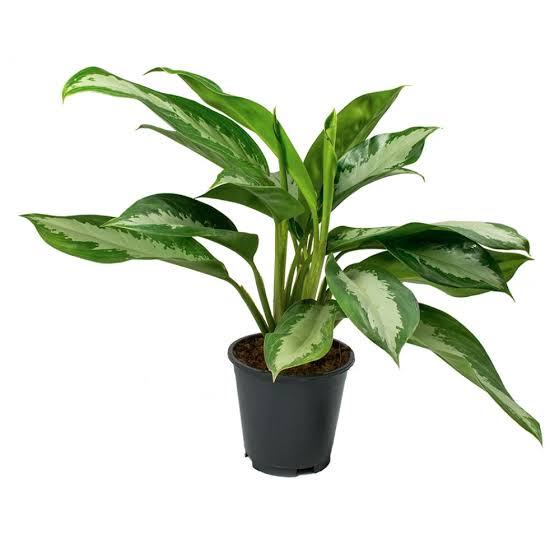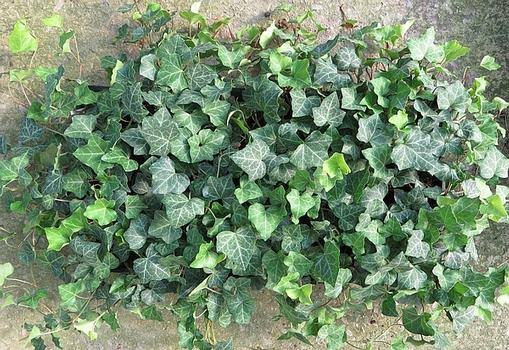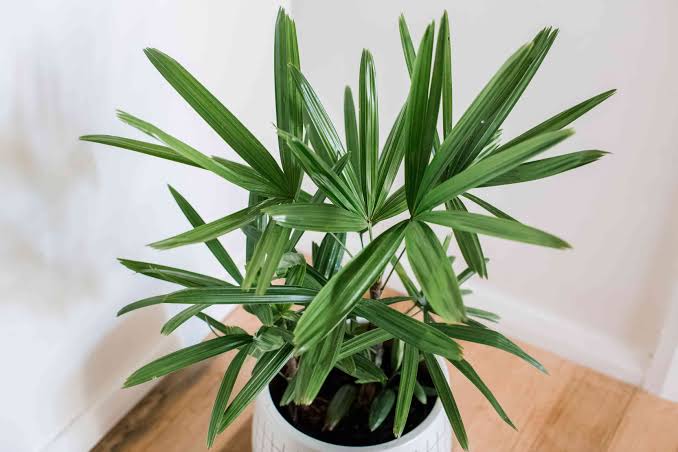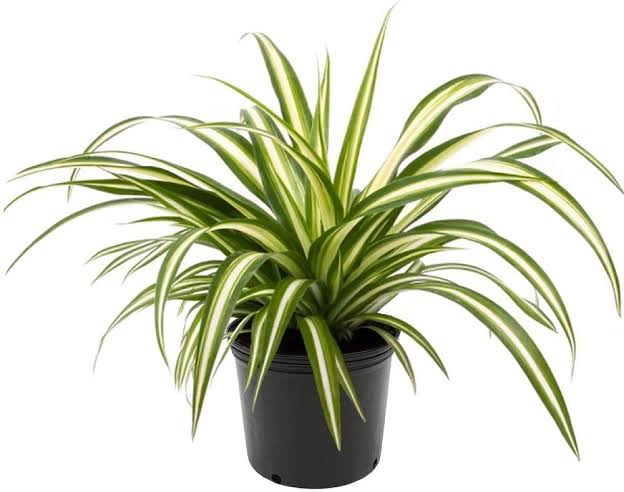Common houseplants can improve indoor air quality by taking in carbon dioxide and releasing oxygen. Indoor plants can improve air quality by removing trace amounts of toxic chemicals that are released by synthetic materials in the home. These chemicals often come from effluent in the bathroom, pets, paint, carpeting, furniture upholstery and other sources. Microorganisms in the soil around the roots of houseplants also contribute to the removal of airborne pollutants and contribute oxygen to the air to a lesser degree.
As part of its research into cleaning the air in enclosed environments, such as space stations, NASA, in a 1989 report, identified more than a dozen species of plants – many of them common houseplants – that effectively absorb air toxins such as mercury, formaldehyde and benzene, often released by common household products such as carpets and chemical cleaners. These plants are masters at converting carbon dioxide to oxygen, providing better air quality overall inside your home.
Most of the plants on NASA’s list are tropical or semitropical. Because these plants originate on the forest floor where they’re exposed to limited sunlight, their leaves have evolved to efficiently exchange atmospheric gases under lower light conditions, such as those found in most homes.
Your houseplants’ ability to produce oxygen and clean the air depends on a number of factors, including their species, size, health and the light levels in your home. Plants that are adapted to direct sunlight will produce the most oxygen when they are kept in front of a window with a southern exposure. The effect of plants on your indoor oxygen levels is also influenced by how many plants you have. You can noticeably improve indoor air quality by growing one houseplant large enough to fill a 6- to 8-inch pot for every 100 to 120 square feet of floor space.
1. Snake Plant

Native to tropical Africa, sansevieria (Sansevieria trifasciata), also called mother-in-law’s tongue, snake plant and viper’s bowstring hemp have green upright leaves with white or cream variegation. Sansevieria tops the list as being the most tolerant of all decorative plants to survive the most unsuitable growing conditions, abuse and neglect a plant could receive.
Similar to other household succulents, snake plants help to filter indoor air. What’s unique about this particular plant is that it’s one of the few plants that can convert carbon dioxide (CO2) into oxygen at night. This quality makes it an ideal plant for bedroom decor as it can help regulate healthy airflow.
2. Areca Palm

The areca palm tree (Dypsis lutescens), also referred to as golden cane palm, cane palm, yellow butterfly palm, bamboo palm and Madagascar palm is a common landscape plant. This palm tree, with its long, graceful feather-shaped fronds, will add a tropical feel to your home and is especially well suited for screened patios and atriums.
Not only does Areca take in carbon dioxide and release oxygen, but it can also filter out chemicals like benzene, formaldehyde, xylene/toluene, trichloroethylene and other air pollutants come from a variety of sources including adhesives, carpet, paints and stains, tobacco smoke, and gas ranges. Although the areca palm can grow as high as 30 feet outdoors, in interior locations, it tends to average only 6 to 7 feet. Long evergreen leaf stems shoot up from golden stalks and arch outward and down.
Also Read: Different Types of Ornamental Grasses For Landscaping
3. Syngonium Plant

Syngonium plants (Syngonium podophyllum or Nephthytis triphylla) are popular indoor plants. Also called an arrowhead plant or vine, they grow vibrantly and have beautiful variegated foliage. Although these plants grow outdoors in warmer climates, in most parts of the United States, these plants are grown indoors for their tropical evergreen foliage. These plants have groups of greenish-white flowers that develop into brown-black berries. However, the plants rarely flower indoors.
Many varieties of Syngonium plants can be used to filter room air, and all have a higher than average ability to remove chemicals. These two palm trees are easy to care for and release moisture into the air in addition to their air filtering qualities.
4. Croton Plant

Crotons (Codiaeum variegatum) are evergreen shrubs that feature tropical, beautifully marked foliage that brightens up your home or garden, delivering an eye-catching appeal with their striking hues. Depending on the cultivar, they can reach a mature height of 12 feet and a width of about half their height. When grown indoors, croton plant has ability of purifying the air, filtering out pollutants and increasing the oxygen content in the building. This quality makes it an ideal plant for bedroom decor as it can help regulate healthy airflow.
Also Read: Types of Hibiscus Flowers
5. Money plant

The money tree plant (Pachira aquatica) is a large tree. Also called the Malabar chestnut, it is often grown indoors in containers. This tropical tree is commonly used to add some green in homes as well as offices, lobbies, restaurants and other public spaces. A money-tree is a low-maintenance, pet-friendly plant with hand-shaped leaves. It grows large, green pods containing edible chestnut-like seeds.
Native to Central and South America, the plant is traditionally thought to bring good fortune to its owner. It is from this belief that it earned its common name of the “money tree” plant. Money plant is an ideal bedroom plant, because Money plant continues to produce oxygen at night unlike other plants that produce carbon dioxide at night.
While money trees can grow up to 60 feet high in the wild, they can also be kept as bonsai trees or manageable indoor trees, growing up to 8 feet high. A money tree grown as a houseplant is unlikely to flower, but you can still enjoy its full, hand-shaped leaves indoors.
Money tree plants grown indoors in containers need bright light and evenly moist soil. The soil should be well draining, which can be achieved by cultivating the plant in a pot that has drainage holes in the base. If the plant starts dropping its leaves, it is a sign that the soil is too dry.
6. Chinese Evergreen

The aglaonema plant, also known as Chinese evergreen, offers both. This compact, easy-to-grow houseplant is known for its attractive coloring and patterns, ranging from jungle green, pink, red, silver, yellow, and cream to stripes and speckles. This hardy plant stay pretty compact topping out at around two feet tall, but pack a punch with their vibrant leaves in bright patterns. Chinese evergreen has a secret superpower; it produces high levels of oxygen during night time and at the same time reduces carbon dioxide levels and the level of other pollutants such as benzene, nitrogen and airborne dust while increasing humidity.
7. English ivy

English ivy (Hedera helix) has a vining habit that makes it suitable for hanging baskets or indoor areas where it can climb without damaging any underlying surface. This shade-tolerant plant removes benzene from the air while releasing large volume of oxygen into the air. It features attractive, sometimes variegated leaves and prefers mild temperatures, suffering in hot areas of the home.
Also Read: Types of Evergreen Trees for Landscaping
8. Lady palm

The lady palm (Rhapis excelsa) is versatile and relatively cold-hardy. A medium-sized palm, it stays a manageable size whether grown outdoors or as an indoor potted plant. Its stalks are similar to bamboo, with prominent nodes and dark rings at each node. The lower part of each stalk is covered in a coarse, loose, brown-colored fiber, adding to the plant’s interesting appearance, while its leaves are extremely dark green and quite shiny. As a lady palm matures, it forms an expanding, dense clump of stalks and leaves. A relatively slow-growing plant, the lady palm can grow up to 10 feet tall when grown outdoors under ideal conditions. The plant is a relatively high oxygen producer and its effective in clearing formaldehyde, benzene and other harmful chemical from indoor air.
9. Peace lily

The peace lily (Spathiphyllum sp.), sometimes also known as white flag, is one of the few houseplants that will produce flowers in low light conditions while also filtering trichloroethylene and benzene out of the air and at the same time releasing large volumes of oxygen into the air. The peace lily features large, dark green leaves and attractive white spathes that appear above the foliage on stalks.
10. Boston fern

Boston ferns (Nephrolepis exaltata “Bostoniensis”) are a cultivar of the wild-growing sword fern of Florida. They have up to a 3-foot height and spread, and have the triangular-shaped drooping green fronds most people picture when they think of ferns. Boston ferns make excellent hanging basket plants for indoors or outdoors. This plant is also effective in generating high amounts of oxygen during the night. It removes toxic chemicals such as benzene and formaldehyde.
11. Weeping fig

Also known as Java laurel or weeping Chinese banyan, Weeping fig ficus (Ficus benjamina) is a dense, upright evergreen tree valued for its shiny green leaves. Although weeping fig ficus is suitable for growing outdoors in U.S. Department of Agriculture hardiness zones 9 to 11, it can be nipped by frost in exposed areas. It is well-suited as a container-grown indoor plant that is moved outdoors during the summer. Often, the plant is placed outdoors year-round in protected locations such as indoor shopping malls or courtyards. The plant is a relatively high oxygen producer and it’s effective in clearing formaldehyde, benzene and other harmful chemicals from indoor air.
Also Read: Different Types of Fern Plants For Landscaping your garden
12. Spider Plant

Spider plants (Chlorophytum comosum) sometimes referred to as airplane plants, are low-maintenance and ideal for use in hanging baskets. These plants have long, thin, arching and sometimes variegated leaves, and occasionally produce small flowers on extended aerial runners. Spider plants can absorb chemicals such as benzene, carbon monoxide, formaldehyde and xylene from the air while producing significant amount of oxygen into the air. They are easy to propagate using the plantlets that readily appear at the end of aerial runners.
13. Gerbera Daisy

Also known as Transvaal daisy, Gerbera daisy (Gerbera jamesonii), is a daisy-like bloomer that comes in a variety of jewel tones. The impressive flowers, which grow on top of single, tall stems, are complemented by mounds of slightly fuzzy leaves. At maturity, Gerbera daisy reaches heights of 8 to 24 inches, depending on the variety. Gerbera daisy has ability to produce large volumes of oxygen and in the process helping to clean the indoor air. The dangerous chemicals it helps remove include formaldehyde, toluene and xylene.
14. Pothos Plant

Golden pothos (Epipremnum aureum), or devil’s ivy, is among the easiest houseplants to cultivate successfully and grows relatively quickly. This specimen features heart-shaped green leaves tinged with cream or gold that grow on a vining stem that is either allowed to hang or trained to climb. Golden pothos filters out formaldehyde and carbon monoxide while at the same time producing large volumes of oxygen.
15. Lucky Bamboo Plant

Lucky bamboo (Draceana sanderana) houseplant is a bright green plant that resembles bamboo, with thick, cylindrical stems that terminate in teardrop-shaped leaves. Lucky bamboo specimens can grow as tall as 3 feet, but they could begin to look ragged. Indoor settings with low light make an ideal environment for lucky bamboo. The plant is typically a high oxygen producer and is effective formaldehyde, benzene and other harmful chemicals from indoor air.
Also Read: Aloe Vera Varieties
16. Aloe Vera Plant

Aloe vera (Aloe plant), also called medicinal aloe or true aloe, is a succulent that is well-known for its medicinal properties. Aloes produce a rosette of fleshy leaves that may be either spined or smooth, depending on the variety. Most, however, have spines that line the outer edges of the leaves, and some have spines in the center of the leaf. Spines vary in size and shape according to the variety of aloe. Colors range from green to blue-green, with some aloes sporting reddish-colored foliage. Some aloes have blotches, spots or stripes on the leaves. Aloe vera is ranked among the best plants that produce large volumes of oxygen. It is also effective in absorption of carbon dioxide from indoor air.
17. Dracaena

Various species and cultivars of dracaena including the dragon tree (Dracaena marginata), “Janet Craig” dracaeana and “Warneck” dracaena can tolerate low light and relatively dry air. Dracaenas are prized for their strap-like foliage, which is often variegated and glossy, and sometimes grows atop erect stems. These plants can remove pollutants such as benzene, formaldehyde and trichlorpethylene while releasing significant amount of oxygen into the air.
Other Plants That Produce Most Oxygen
- Japanese royal fern
- Heartleaf philodendron
- The red-edge (Dracaena marginata)
- Anthuriums